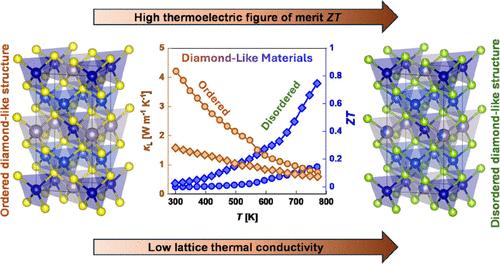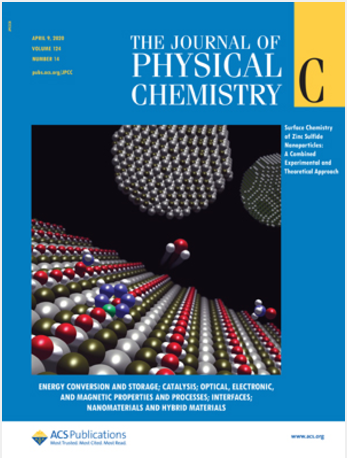Modulated Electronic and Thermal Transport Properties in Cu-Based Diamond-like Chalcogenides by Point Defect Engineering
IF 3.3
3区 化学
Q2 CHEMISTRY, PHYSICAL
引用次数: 0
Abstract
The electronic and thermal transport properties of thermoelectric materials are always affected by the presence of native defects. However, the importance of these defects remains unclear due to the complex nature of their identification. In this study, we demonstrate that powder X-ray diffraction can provide the necessary point defect scheme to explain the transport properties of quaternary Cu-based diamond-like materials. In particular, the mixed cation occupancy of Co, Ge, and Cu in Cu2CoGeSe4 and the mixed occupancy of Sn and Cu in Cu2CoSnSe4, as determined by Rietveld refinement, have been successfully used to elucidate the influence of point defects on the carrier concentration and the lattice thermal conductivity. This approach allows for a quantitative prediction of the lattice thermal conductivity, which reaches a very low value below 0.6 W m–1 K–1 at 773 K for the investigated Cu-based diamond-like selenides. Furthermore, substitutional defects were identified as a means to improve the electronic transport properties, namely, by modulating the carrier concentration and increasing the power factor up to 5–6 μW cm–1 K–2. The improved power factor and low lattice thermal conductivity observed in the Cu-based diamond-like selenides Cu2CoGeSe4 and Cu2CoSnSe4 result in a significantly higher thermoelectric figure of merit ZT than that of the sulfides Cu2CoGeS4 and Cu2CoSnS4. At 773 K, the undoped materials exhibit a ZT value of 0.75. In addition to identifying the exceptional thermoelectric properties of Cu-based diamond-like materials, this research demonstrates the effectiveness of powder X-ray diffraction as a simple yet effective method for investigating point defects in thermoelectric materials.

求助全文
约1分钟内获得全文
求助全文
来源期刊

The Journal of Physical Chemistry C
化学-材料科学:综合
CiteScore
6.50
自引率
8.10%
发文量
2047
审稿时长
1.8 months
期刊介绍:
The Journal of Physical Chemistry A/B/C is devoted to reporting new and original experimental and theoretical basic research of interest to physical chemists, biophysical chemists, and chemical physicists.
 求助内容:
求助内容: 应助结果提醒方式:
应助结果提醒方式:


